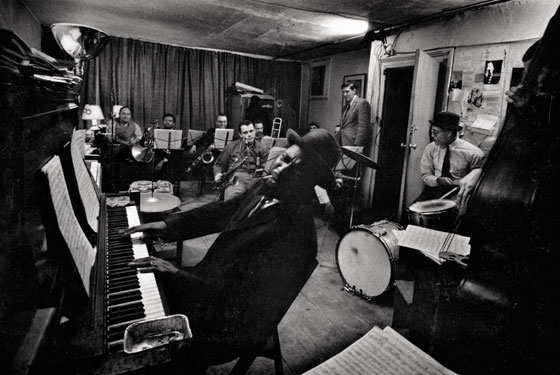
‘Thelonious Monk was the first pianist who made me want to be a pianist,” says Jason Moran, who was a kid studying—and becoming disillusioned with—classical music when he first heard Monk’s most famous tune. It was a revelatory moment in 1989: Moran was 13 and his parents were watching coverage of a plane crash on a muted television. Someone they’d known had died. The only sound was his father’s recording of “ ’Round Midnight.” As Moran wrote recently, “It was all the commentary they seemed to need, the sound of loss and despair.”
“Monk,” says Moran, “was a threat on both the compositional and interpretive side and set the benchmark for what a creative musician should be.” A benchmark Moran is living up to, and then some. Signed to Blue Note Records at 18, Moran quickly made a string of stunning recordings with top stars (Cassandra Wilson, Charles Lloyd) and comers (Jenny Scheinman, Francisco Mela), establishing a reputation for versatility in the extreme. “He’s one of the best, most original young pianists today,” says jazz great Marian McPartland, the 90-year-old host of “Piano Jazz” on NPR. “It’s a fantastic challenge to play with him. He has a really keen sense of rhythm and he’s quirky stylistically.” Moran’s certainly taken the struggle preoccupying his peers (i.e., how do you incorporate contemporary rhythms into the jazz vernacular?) to some novel places, re-casting Afrika Bambaataa’s pioneering electro–hip-hop anthem “Planet Rock” for piano and, at one transcendent Jazz Standard show in 2007, working a piece around the voice of a woman speaking Mandarin.
For his next trick, Moran, 34, will travel back in time. On February 27, at Town Hall, he’ll pay tribute to the man who started it all, performing “In My Mind: Monk at Town Hall,” part of a two-night celebration of the 50th anniversary of that landmark Thelonious Monk Orchestra event (part of a sixteen-stop international tour). The original concert was the first time that Monk—jazz’s most innovative pianist—had performed his work with an orchestra. Fittingly, Moran’s performance will be his first in New York with his ensemble, Big Bandwagon.
The idea for Moran’s concert originated with the San Francisco Jazz Festival, which wanted him to re-create the 1959 concert as part of a Monk-at-90 tribute in 2007. Moran had his doubts. “Technical re-creations can be a recipe for disaster,” he has said, offering Exhibit A, Gus Van Sant’s shot-by-shot remake of Alfred Hitchcock’s Psycho. So he came up with a twist: Rather than engage in rote re-creation, he would, in a sense, document the making of Monk’s performance. “I had no template in mind,” Moran says. “I knew the piece would have to go somewhere deeper than the music. I wanted it to reflect who Monk was as a man, as an American, and as a musician.”
A visit to Duke University, home to the Jazz Loft Project archives of famed Life magazine photographer W. Eugene Smith, gave Moran some context. From 1957 to 1965, Smith rented a floor of his Sixth Avenue workspace for rehearsals, documenting them with a Nixonian obsessiveness. The resulting 40,000 photographs and 3,000 hours of audio include conversations between the notoriously curt Monk and his arranger, Hall Overton, about preparations for the Town Hall concert. Moran was shocked by how much Monk spoke: “It’s a very rare thing to hear him explain in his own words his thoughts about music. I wanted to show another side of him, the verbose Monk.”
To supplement the music, Moran commissioned a multimedia backdrop based on Smith’s archives. To enhance the photos, he turned to artist Glenn Ligon, who, like Monk, favors repetition in his work. “Glenn made a painting that repeats ‘in my mind’—a phrase Monk used within a conversation,” says Moran. Video artist David Dempewolf then combined shots of Ligon’s work with excerpts from the audio tapes, plus video of the land where Monk’s great-grandparents were slaves. “I’ve given some of Monk’s music a historical backdrop,” says Moran, “to help the audience understand his life.”
His next commission—built around the music of Fats Waller (tentatively planned for 2010 at the Gatehouse in Harlem)—will employ more of what McPartland calls Moran’s “impish sense of humor.” “I’m aiming to make a dance party,” says Moran, whose dream vocalist would be Me’shell Ndegeocello. “No seats, all dancing.”
In My Mind: Monk at Town Hall, 1959
Jason Moran. February 27. 8 p.m.